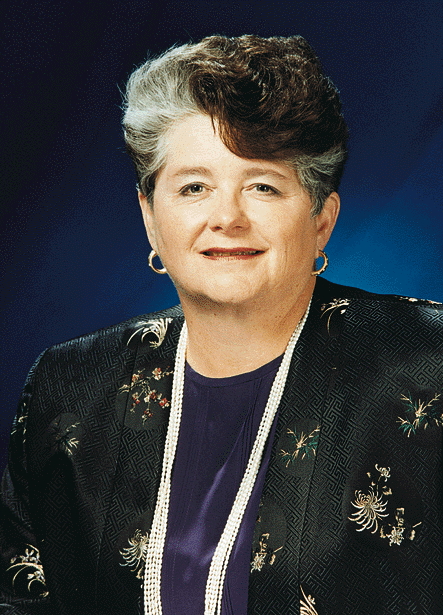![[Currents header graphic]](http://www.ucsc.edu/homeart/currents_header.gif)
![[Currents header graphic]](http://www.ucsc.edu/homeart/currents_header.gif)
July 27, 1998

|
|
M.R.C. Greenwood
|
By Jim Burns
M.R.C. Greenwood, chancellor of UC Santa Cruz, has been elected a fellow of the California Academy of Sciences, a nonprofit organization dedicated to the study, display, and interpretation of scientific collections and to our understanding of the "wonders and value of the natural world."
Chancellor Greenwood was elected by the academy's Board of Trustees in recognition of her "many contributions to the advancement of science." She will be inducted at the organization's annual meeting on October 6.
Founded in 1853 to survey and study the vast resources of California and beyond, the California Academy of Sciences is the oldest scientific institution in the West. Spurred by their concern over the natural environment during the California gold rush, the academy's first members consisted of a group of naturalists who met regularly to present papers on topics of interest to a growing membership of San Francisco citizens. As the collection of specimens from the field grew in number and scope, the members set about identifying, classifying, and naming the species.
The California Academy of Sciences has a long tradition in San Francisco. After several temporary locations, the organization occupied a six-story building on Market Street that was bequeathed by James Lick (benefactor and namesake of UC's Lick Observatory). After 15 years there, the earthquake and fire of 1906 left the building in ruins and destroyed virtually all of the academy's holdings.
The citizens of San Francisco voted to rebuild the academy in Golden Gate Park, across the Music Concourse from the M. H. De Young Museum and Japanese Tea Garden. In 1916 the first building was opened, the North American Hall of Birds and Mammals, which was renovated in 1988 as Wild California. In chronological order the next buildings were Steinhart Aquarium (1923), Simson African Hall (1934), Morrison Planetarium (1952), Cowell Hall (1969), Wattis Hall (1976), the Fish Roundabout (1977), and Life Through Time (1990).
Today the California Academy of Sciences is one of the 10 largest natural history museums in the world, attracting nearly one and a half million visitors annually.
The organization has eight scientific research departments in the fields of anthropology, aquatic biology, botany, entomology, herpetology, ichthyology, invertebrate zoology and geology, and ornithology and mammalogy. Its collections provide essential tools for comparative studies in biodiversity and are ranked among the world's largest.
Chancellor Greenwood has been honored by numerous organizations for her contributions to science. In December 1996, she was elected president-elect of the American Association for the Advancement of Science, and this past February began her term as president. In July 1996, President Clinton nominated her to serve, and the U.S. Senate has confirmed her, as a member of the National Science Board, a prestigious group comprising the nation's top 24 leaders in science and education. In 1992 she was elected to the Institute of Medicine of the National Academy of Sciences. Chancellor Greenwood is also vice president of the American Society of Clinical Nutrition.